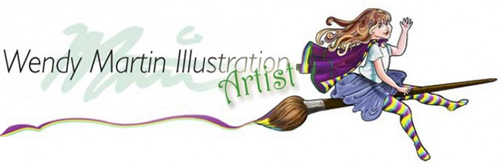
 A transplanted New Yorker now living in Missouri, Wendy Martin has been working as an illustrator for 25+ years.
A transplanted New Yorker now living in Missouri, Wendy Martin has been working as an illustrator for 25+ years.
Wendy’s love affair with art and illustration began at an early age. One of her earliest memories is of sitting with a pile of crayons and papers strewn around her proclaiming to her parents that someday everyone in the world would be looking at her art. In spite of her parents’ attempts to steer her toward a more practical choice, she never wanted to do anything else.
So, Wendy followed her heart and earned a degree in Fashion Design from the Fashion Institute of Technology, then continued her art education at the School of Visual Arts, earning a B.F.A. in Graphic Design. These disciplines can still be seen in her work in her strong lines, textures and detailed patterns.
Her career began in advertising and graphic design in New York, where she was often called upon to create spot art for a variety of clients, which included Fortune 500 companies such as Kraft, General Electric and Sears. After her move to Missouri in 2000, she turned her focus to her true love, children’s books. An Ordinary Girl, A Magical Child, a children’s book she both wrote and illustrated was released in 2005. When the original publisher folded, An Ordinary Girl, A Magical Child was picked up by a new house, edited and re-released in 2008, then went on to become a finalist in the 2009 international COVR awards. Four additional picture books and a coloring book quickly followed.
Wendy can still be found sitting around her studio with papers strewn around her creating stories and illustrations for children. She has since traded in her crayons for watercolor, pen and ink, and a computer.
She is a member of the Society of Children’s Book Writers and Illustrators, and the Mixed-Up Files of Middle-Grade Authors.
Here is Wendy discussing the February 2014 promotional postcard mailer she created entirely in Adobe Illustrator:
I’ve been using AI since it first came out. Sometime in the early to mid 90s, I believe. That first version of the program was installed via a couple of 3×3 floppy disks. Remember those? Not very floppy, and incredibly tiny amount of storage space. I currently use CS5, the CD for the program stores more data than my first Apple computer.
Not only has AI become a much bigger program, it now has so many more capabilities to create painterly art. Here is my illustration process in Adobe Illustrator.
I start out with paper and pencil. I may use a sketchbook, but in most cases, I just grab a piece of blank copy paper and scribble till something comes of it. Once I have a messy thumbnail down (I won’t bother sharing it, since it is unintelligible to anyone but myself) I work on character development. Characters are sketched separately, scanned in and layered into Photoshop. Adjustments and revisions are made and background options explored.

Once I have my rough layout designed in Photoshop, I bring the file into Illustrator as a template layer. I begin inking over the pencil rough. As you can see above, the inking has some major changes, especially to the right half of the image. I decided the image of the three boys and a dog playing with a couple of basketballs was too ordinary. I added more story telling to the illustration by changing the middle boy’s basketball to a swirl of light. Where the boys crossed over the division delineated by the swirl, they and their environment became a fantasy world. The dog was out-of-place, so it transformed into a fox.
I create my characters on separate layers in AI, that way I can revise them in placement, size etc, easily. The only drawback, if you can call it that, of this technique is I have to draw each character in its entirety. It’s a little more work initially, but makes the fine adjustments throughout the image creation much less of a hassle.

When the majority of the character inking is done, I begin adding flat color. With this piece, I had several false starts with getting the swirling light and the portal to reflect the vision in my head. Glowing orbs of light are a lot easier to accomplish in Photoshop, apparently, because I couldn’t find any reference or samples created utilizing AI. Since I didn’t want the background to compete with all that was going on with the main characters, I hadn’t inked it. I wanted to simulate a bright sunny day, but differentiate the left side from the right. I also wanted to avoid flat colors in the hills, fields and court surface, so I messed around with a variety of textures until I got the effect I was looking for. The glowing orb and separation are progressing to closer to the image in my mind. I added a larger, darker version of the background flowers to the foreground.

I worked the details into the left side of the background, adding leaves to the tree with flowers and grass at its roots. I decided the costuming on the boys was too similar in color and values to those of the background. I changed them so the boys appeared to jump forward in the space. The glowing orb and its trailing light has finally come close to what I was aiming for. I began laying in the fur on the fox to make it more dimensional. Then I moved to the boy on the left and concentrated on the highlights and shadows on him, his clothing and the basketball he’s dribbling.
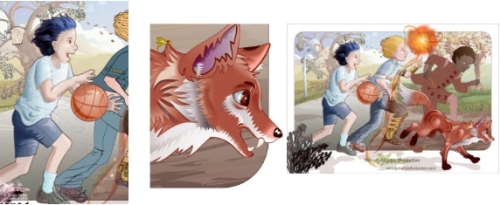
I worked on the boy and then moved over to the fox bring dimensionality and a painterly feel to both of these characters. Then I completed the background on the right side, adding the trees, leaves, flowers and grasses along with their shadows. The color and shading were also added to the basketball hoop. Shading and highlighting of the middle boy was also attacked, paying special attention to the cross-over details on his clothing to differentiate the mundane from the magical worlds he was straddling. The lighting on this was tricky since he is split by the trailing light of the glowing orb.

More details were added to the fox before I moved on to the last boy. As I was working, I noticed all the boys’ legs were in the same position. I didn’t like the way the elf shoes were hitting the fox, so I revised the boy’s lower half to add more variety to the children and remove the confusion between the elf shoes and fox. Once the revisions were made, I continued adding details to the woodland elf costume. It’s hard to tell here, but the elf-child has leaves scattered in his hair as well. I also decided the style of middle boy’s hand didn’t match the rest of the image, so I made it more realistic and changed its position.
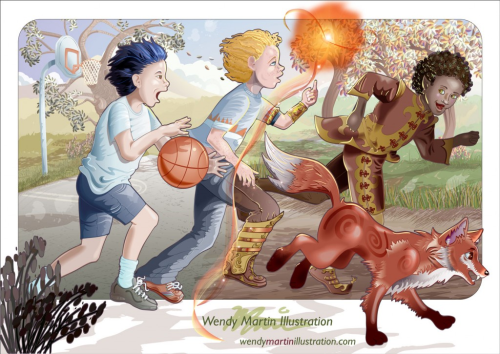
While I was adding final details, I decided the two boys on the left needed to have their faces revised. Although the adjustments are minor, they gave the boys more definition and made their faces more in keeping with the semi-realistic style of the image. Almost done but for a few more minor revisions.
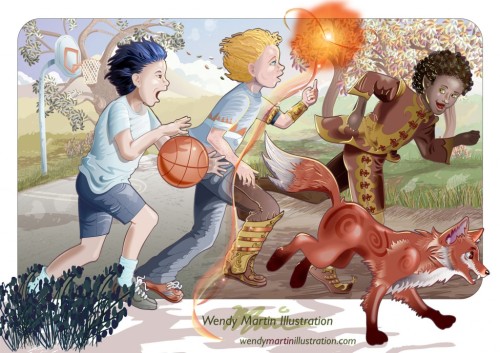
Finished piece.
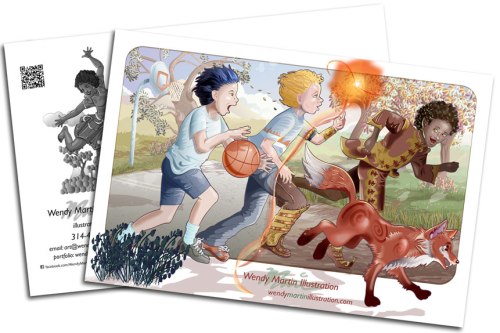
Here is the printed piece back from the printer and ready to mail out.
How long have you been illustrating?
I’ve been creating art in one form or another for as long as I can remember. When I was 12, the children’s librarian was so impressed with my origami pieces she invited me to be the guest artist for the display cases in the children’s wing library entrance. It was quite an honor, since the guest artists were usually well-known professionals from Long Island or New York. The display cases where 2’x6’ long and about 18” high, one case on each side of the entrance hall. I created a mountain village scene for one and a fishing village scene for the other. It took me three months to complete all the origami pieces.

How did you decide to attend Fashion Design from the Fashion Institute of Technology?
I went to a very large high school. There were close to 3,000 students in the 3 grades. Because of the size of the school, and the affluence of a lot of the surrounding communities, my upper grade education was more like college. The high school had wings divided by discipline. One of the wings was the Arts and Theater wing. I had classes in fashion illustration, textile design, life drawing and costuming. I was very passionate about pattern and textile. Everyone assumed I would go to an art college. I wanted to focus on illustration, but my parents talked me into going into fashion design because they believed it had more practical applications in the working world. I applied to Pratt, FIT and Parsons. Pratt granted me a full scholarship, but when my parents and I went to visit the college, they were afraid for my safety in the Brooklyn neighborhood the college was located in. I chose FIT because it had a 2-year program and I wanted to get out on my own as soon as possible.
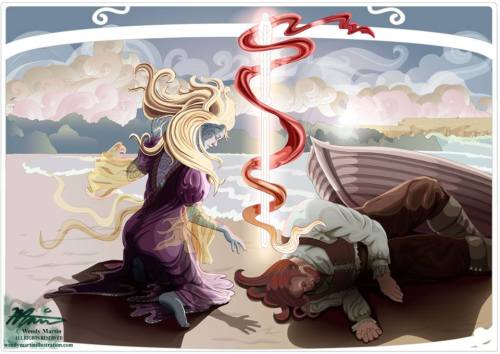
What made you decide to continue your education at the School of Visual Arts for Graphic Design?
I was offered a job before I even graduated from FIT. I was thrilled until the newness wore off. I was the designer for a little firm that created clothing for low-end department stores similar to what Wal-Mart is today. Part of my job was to go to places like Macy’s and Bloomingdales and make sketches of their merchandise, bring my sketches back and make patterns for my employer. In the fashion world it’s called a knock-off and was part of the business. It was sucking the soul right out of me. So I left the fashion world and got a job as an illustrator at a hand-painted clothing store. I was paid by the piece, and became really fast at copying the owner’s designs onto various items of clothing. I struck out on my own, came up with my own line and gave it a go. Part of what I needed to do was create advertising. I loved putting all the pieces together, but decided I would be better off if I got my BFA and learned from experts. So I applied to SVA for their Graphic Design program.
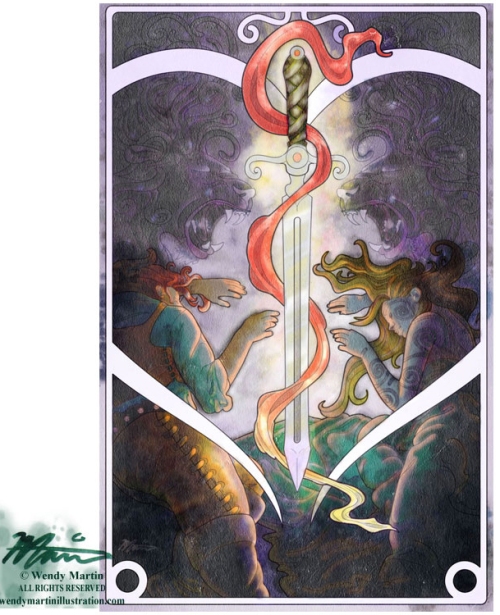
What were you favorite classes?
Richard Wilde, the head of the Graphic Design program, taught one of my classes. He really pushed the students to think outside of the box to fulfill the assignments. I loved that class because there was always a new challenge. I no longer remember what it was called, but I do know Mr. Wilde create a book a number of years later based on the class with samples of student work.
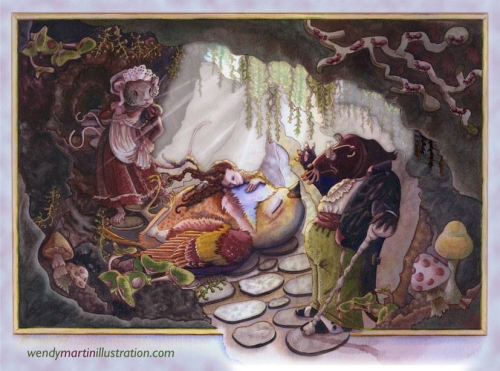
Did SVA help you get the job in advertising after you graduated?
Not really. At that time NYC was a very scary place to be living. I move to Connecticut right after I graduated. I got a job as an Art Director for a publisher of 5 business trade publications. After working there for a while, I found a job closer to home as a paste-up artist for an advertising firm that created ads for the telephone book yellow pages and menus for fine dining establishments. The owner of that business got into serious trouble with the law. One day, after I’d been working there for a few years, I showed up to work and the building was padlocked shut. So I became a freelancer. One of the places I freelanced for was Black Birch Graphics, a non-fiction school library book publisher. Another place I freelanced was an advertising agency creating business-to-business publications for Fortune 500 companies. Eventually, I ended up freelancing for this company full time. I was with them for 9 years.
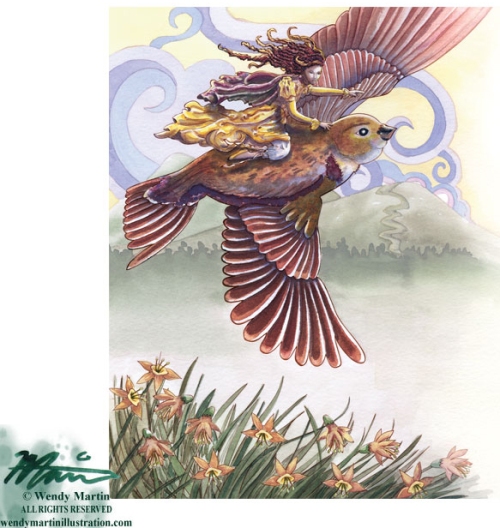
What made you leave that job in Connecticut and move to Missouri?
I blame the Internet. I met the man who became my husband on-line. He didn’t want to be separated from his children by moving to New England, so I sold my house by the beach and relocated to Missouri.
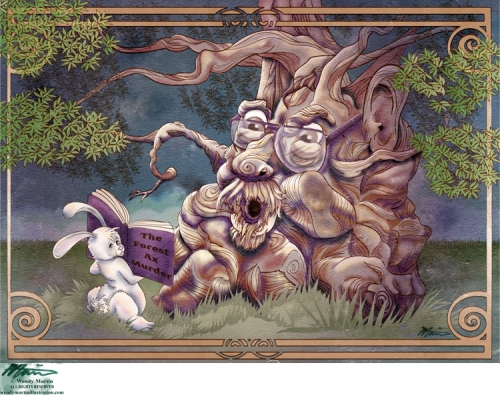
Do you feel that the classes you took in college have influenced your style?
Yes. I love patterns and flowing lines in clothing. My style is very graphic as well, probably from long years as a technical illustrator with the advertising agency.
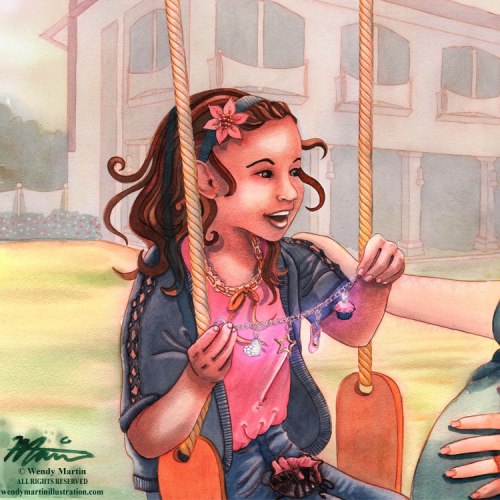
What was the first art related work that you did for money?
When I was 11 or 12, my mother hired me to illustrate a pamphlet she wrote on dog training. I created 5 illustrations for her. I think she paid me $50. The illustrations were not very professional, but I got paid.
My first “real” illustration job was for Crossword Magazine in 1987. Mr. Wilde had an agreement with the art director to show him student work. If the AD liked any of the images, the student was offered the opportunity to create mechanicals for the cover of the magazine. I had two pieces selected. This was before computers. I had to ink all those lines by hand, with a Rapidograph. I was lousy at it and ended up hiring a fellow student to do the inking for me. We split the fee.
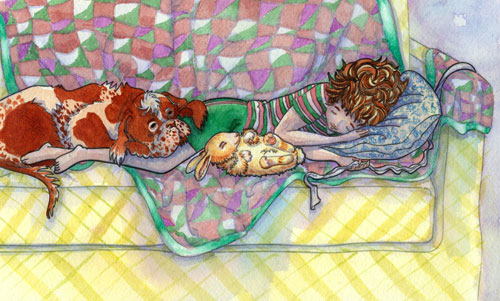
When did you decide you wanted to illustrate a children’s book?
After I moved to Missouri.
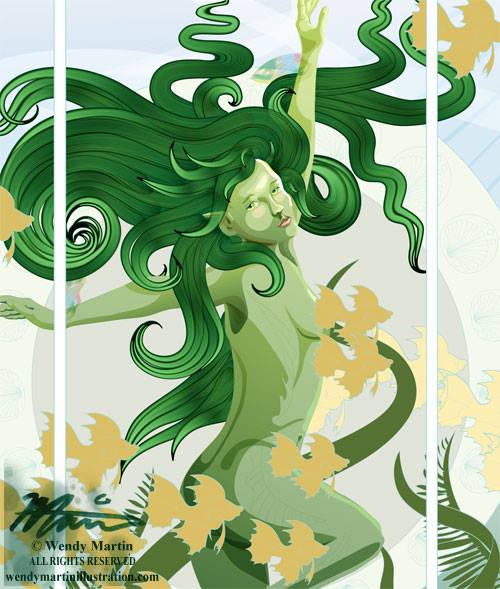
How did you do freelance work while you were working to break into the children’s publishing industry?
I freelanced for places like Sear Photo Studios, Purina, and Mays Company. I did illustration, logo design, prop design, photo retouching and general graphic design.
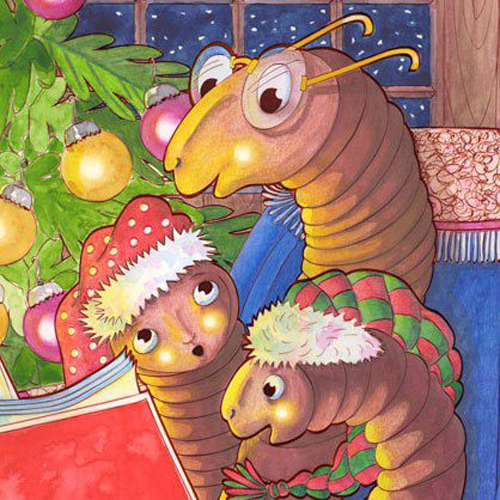
Was An Ordinary Girl, A Magical Child, your first book?
Yes.
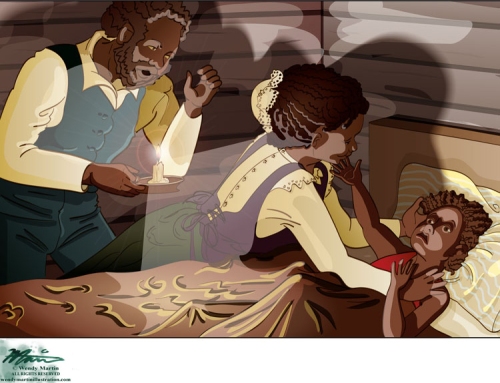
Who published that book in 2005?
Pagan World Press
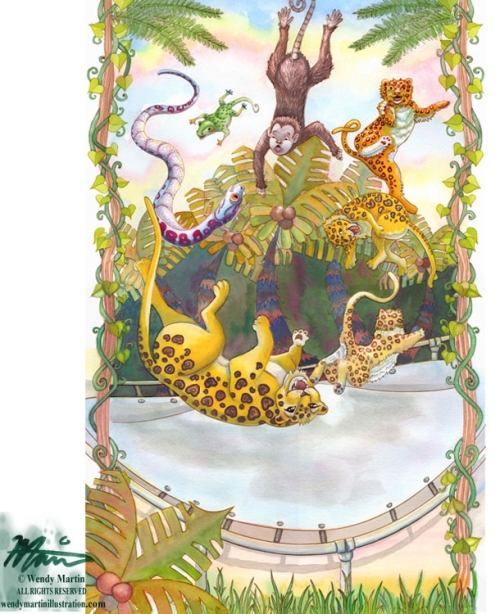
How did that contract come about?
Ordinary Girl is a very niche book. The rejections I received all told me the book’s market was too small. I was lamenting this to a fellow writer friend of mine when she said her publisher was looking for Pagan-focused books. I sent him a query and he jumped at the chance to publish the book. Sadly, the publisher folded shortly after my book was released.

How did you find another publisher after the first publisher folded?
It pays to have friends who know people. Another friend put me in touch with this publisher and I signed a 3-book contract, which included the already published book.
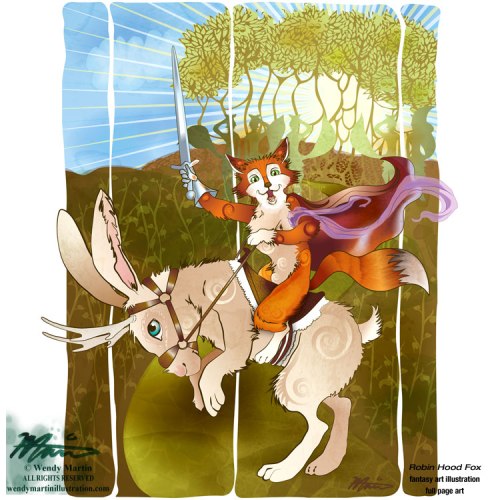
Did you have a hard time regaining your rights, so you could get it published with a new publisher?
I had a lawyer review the first publisher’s contract before signing it. One of the clauses was reversion of rights after a certain time period of the book being unavailable. So I waited the allotted time period, had the lawyer draft me a letter declaring my intentions and the clause for reversion of the rights and got them back. It pays to have a good lawyer on your side.
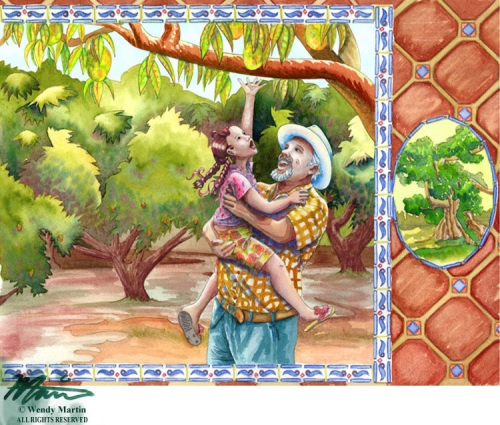
Do you consider that book to be your first big success?
Ordinary Girl went on to get an award sticker and was reprinted 3 times. It’s had a good run and still outsells all my other books.

How many picture books have you published?
Five
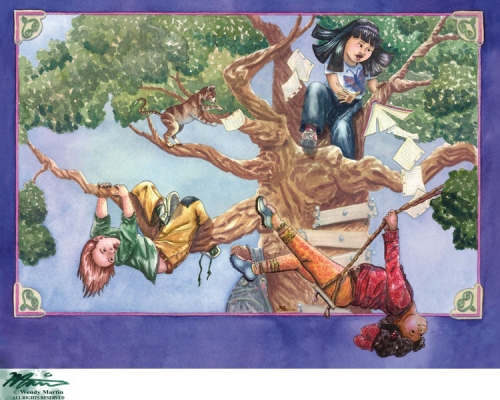
Were they with the same publisher?
Yes.
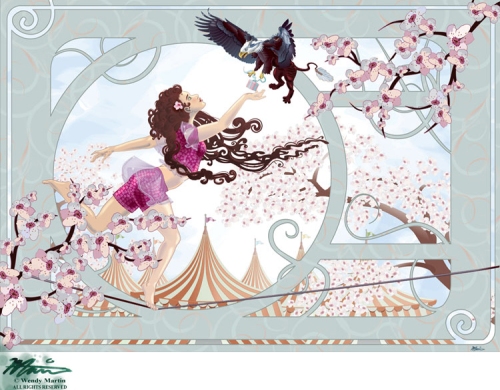
Do you plan to write and illustrate more books?
I’m working on several dummies at the moment.
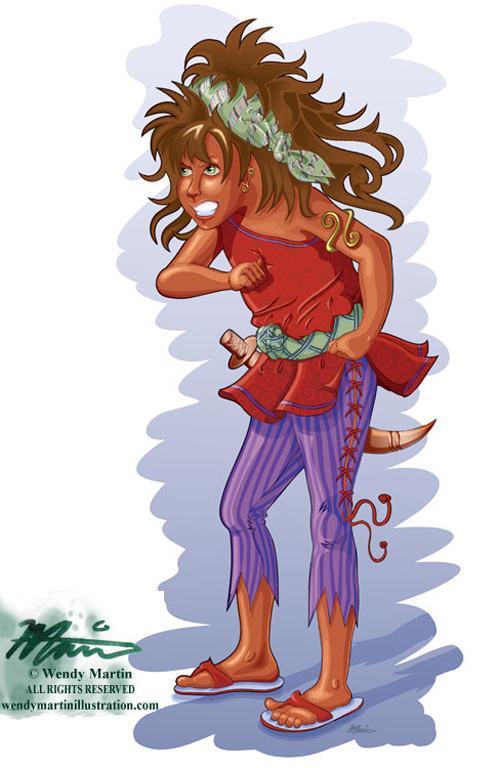
Are you open to working with self-published authors?
I am, under certain conditions.
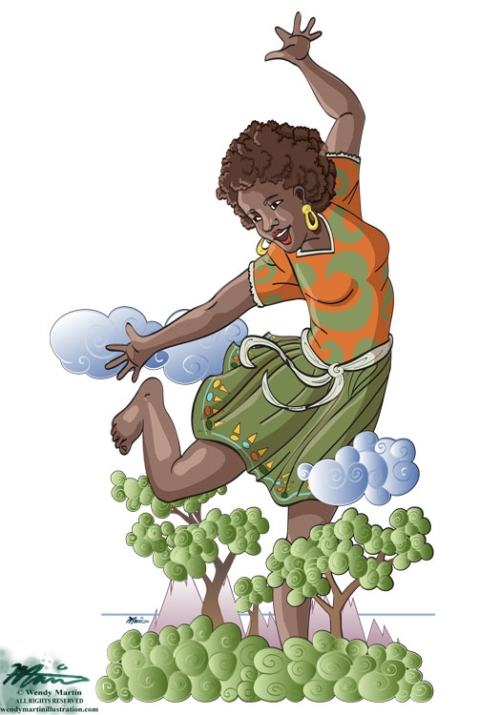
What materials do you use to paint your color illustrations?
I use digital and traditional medias.
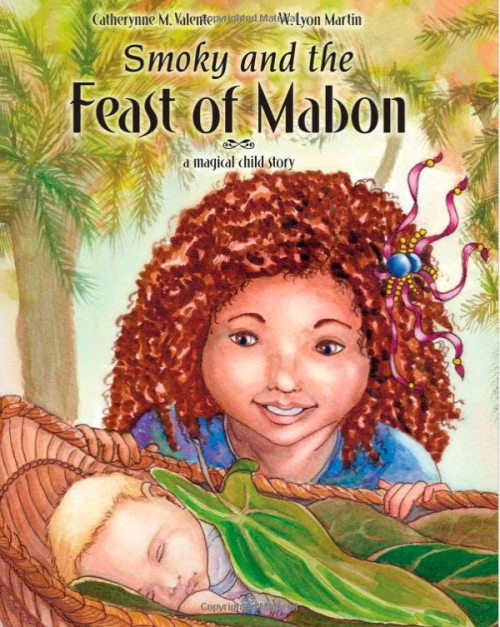
What do you use with your black and white?
Mostly digital. I always start with a pencil sketch.
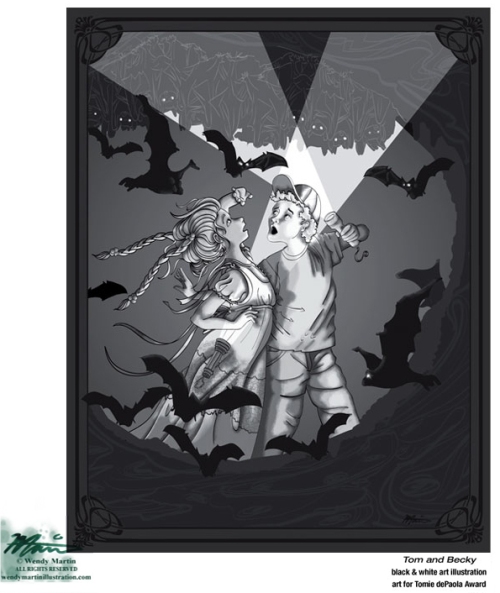
Do you feel there is more work out there for black and white illustrations?
I think it depends on the market and the artist’s style. My dream job would be doing color covers with interior line art for chapter or middle grade books.
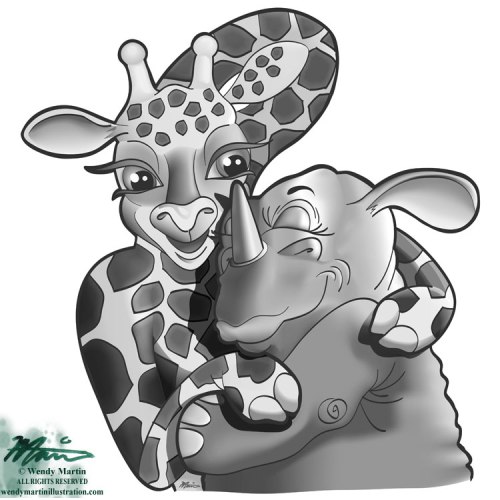
Have you done illustrations for any children’s magazines?
Yes.
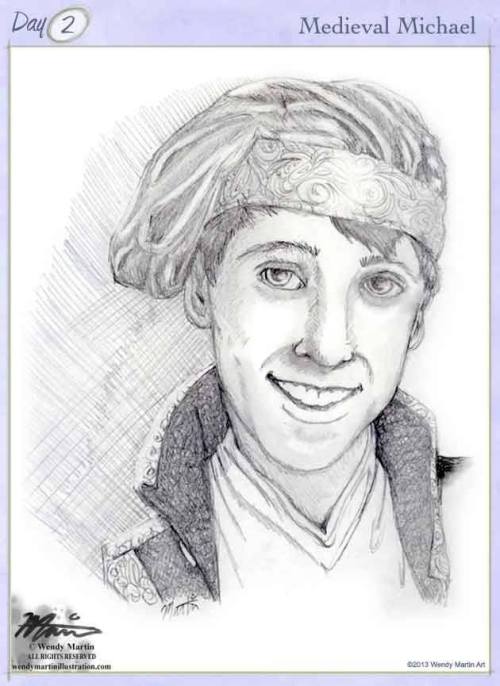
What types of things do you do to find illustration work?
I used to advertise in print annuals and on group portfolio sites, but most of my paying work came from postcards and direct email marketing so that’s where I focus my efforts now.
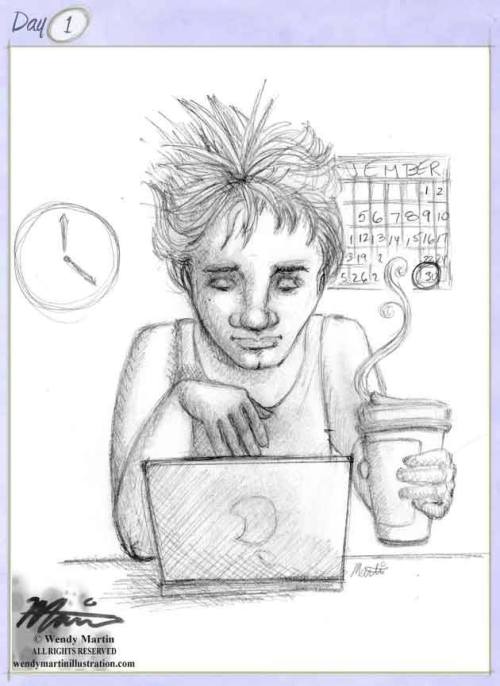
What is the one thing in your studio that you could not live without?
A padded seat cushion. After spending hours in a chair, it really makes a huge difference in being able to keep working in comfort.
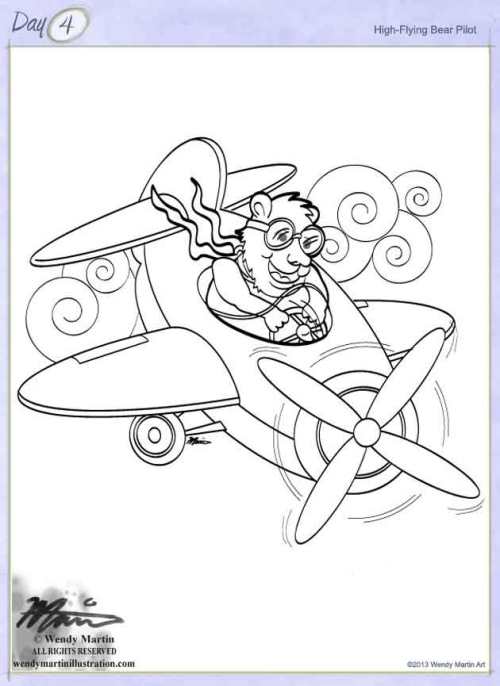
Do you try to spend a specific amount of time working on your craft?
I consider illustration my full-time job. I am in the studio every weekday morning at 7. I usually work until 3 or 4. If I have a pressing deadline, I will go back to work in the evenings and on weekends. I’d say I spend about 40-50 hours a week in the studio, either working on a piece or on marketing or updating my blog and web site.
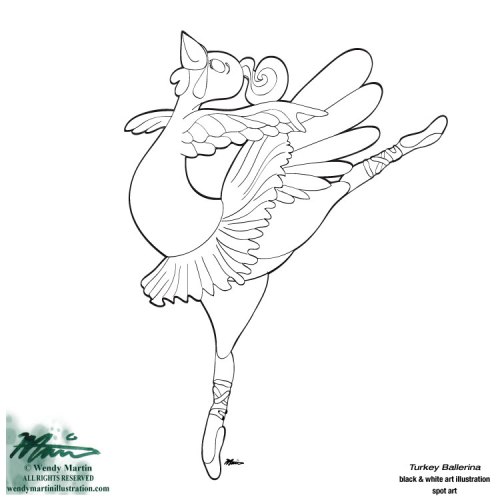
Do you actively look for school visits? Or do they find you through word of mouth?
At the moment I’m not actively seeking school visits. I will probably go back to it when I have a new book to promote.
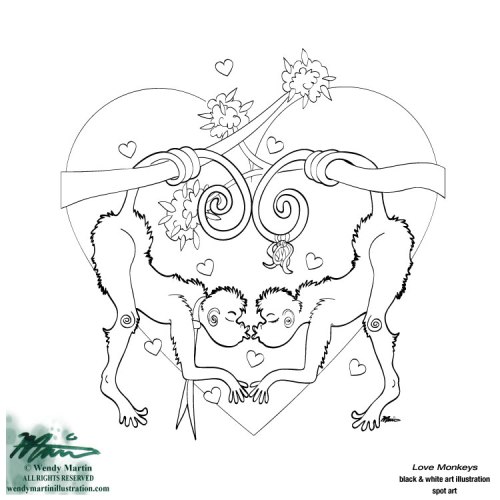
Do you have an artist rep.? If yes, who? If not, would you like to have one?
I’m between agents right now. My last rep decided she no longer wanted to be in the publishing business and quit. The book she was marketing is hidden in a drawer somewhere since I don’t know where it was shown. I have several picture books out on submission with carefully selected agents.
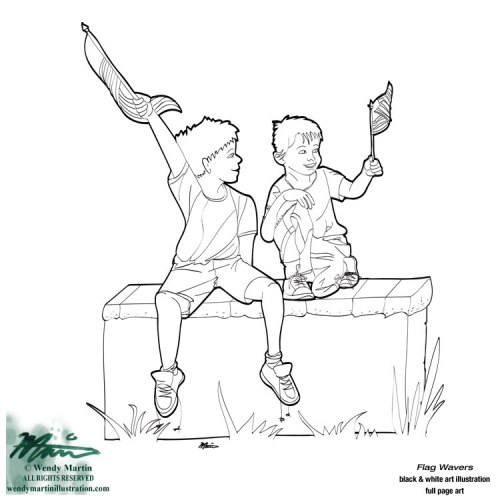
Do you take pictures or do any types of research before you start a project?
I spend a good portion of time on research and reference collection before and during any project. I used to berate myself that I was wasting time, but I now know it’s an essential part of my process.
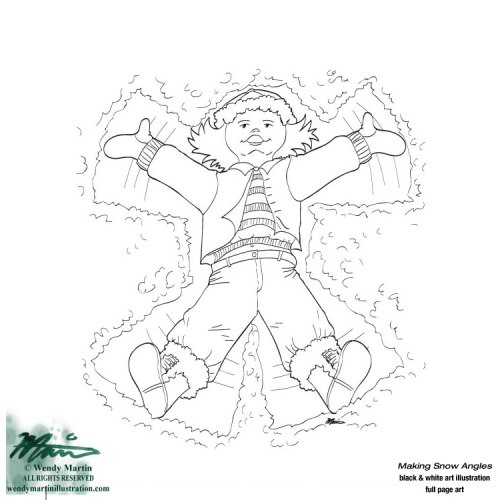
Do you think the Internet has opened doors for you?
Most definitely.

Do you use Photoshop or Corel Painter with your illustrations?
I use Photoshop only after an illustration is 90% done. Mostly for minor editing or color correction.
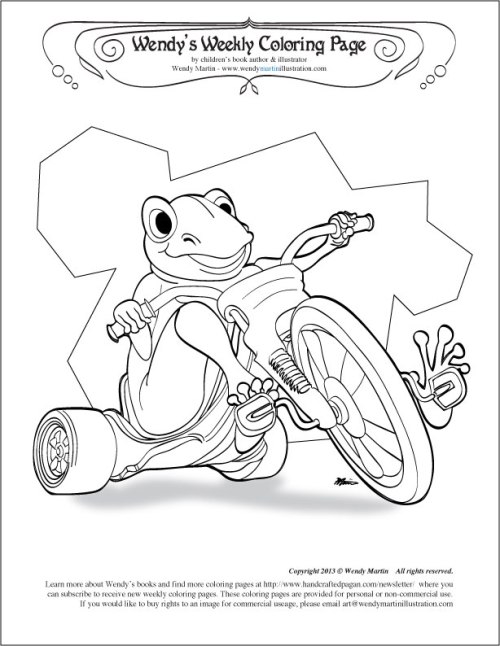
Do you own or have you used a Graphic Drawing Tablet in your illustrating?
I have a 12-year-old 4X5 Wacom tablet. I use it nearly every day.
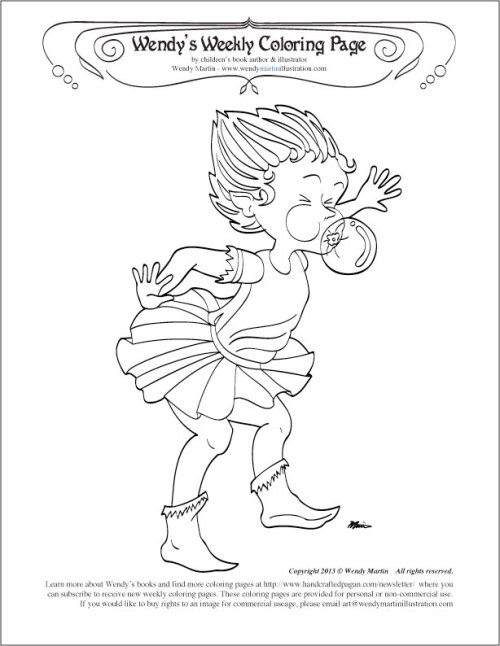
Do you have any career dreams that you want to fulfill?
I’d like to illustrate books for the major publishers. I’d also like to have steady educational publishing clients.

What are you working on now?
I create new pieces all the time. I also have several picture book dummies in the works. Plus, I’ve branched out into fantastic art in the past few years. Last May, my husband and I took a mini vacation to Kansas City and attended Spectrum Fantastic Art Live. I went as a spectator, but took some postcards with me. Charles Vess chastised me for not having a booth and displaying my art there. So this year I bit the bullet and applied for a booth and was accepted. May is only a few short months away, so I’m focusing on creating enough fantasy art to fill my booth. I hope Mr. Vess likes what he sees.
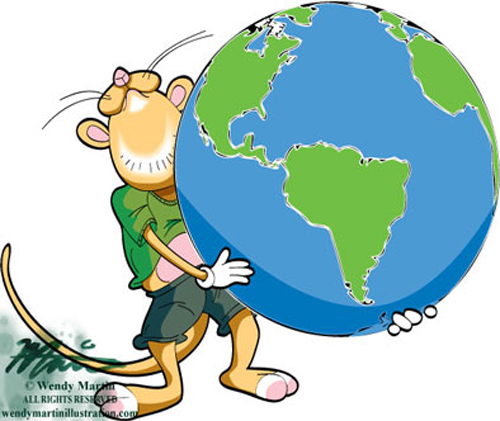
Do you have any material type tips you can share with us? Example: Paint or paper that you love – the best place to buy – a new product that you’ve tried – A how to tip, etc.
One thing I tell my traditional media students is to buy the best quality art supplies they can afford. For years I used the cheapest paper, paints and brushes to save money. When I finally splurged on quality supplies the difference in my paintings was huge. I had a lot more successful end results.
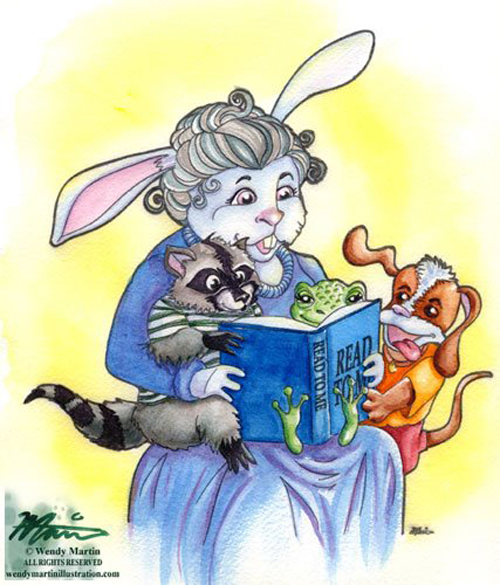
Any words of wisdom on how to become a successful writer or illustrator?
Draw or write every day. Creative endeavors require constant practice. Illustrating is a marathon event. You have to train constantly to compete.
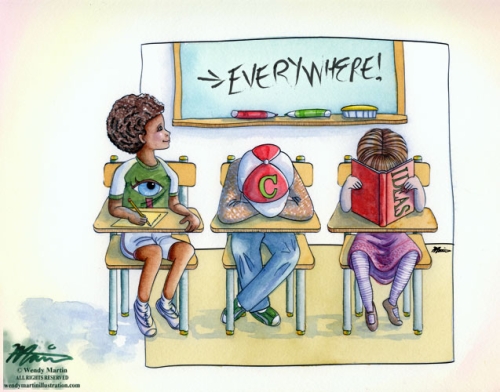
Thank you Wendy for sharing your journey, talent, and process with us. Please remember to keep us up-to-date with all your future successes. You can find Wendy at: www.wendymartinillustration.com
Please take a minute to leave Wendy a comment. I am sure she would like that and so would I. Thanks.
Talk tomorrow,
Kathy
Filed under:
Advice,
authors and illustrators,
demystify,
Illustrator's Saturday,
inspiration,
Interview,
Process,
Tips Tagged:
An Ordinary Girl,
School of Visual Arts,
Wendy Martin 

 When I was a child, I had a reoccurring nightmare. I was on a field trip with my third grade class in a large grassy area with a huge tree in the middle. All the kids were following the teacher across the field and under the shade of the tree. I wasn’t a very popular child, and I was in the tail end of the line.
When I was a child, I had a reoccurring nightmare. I was on a field trip with my third grade class in a large grassy area with a huge tree in the middle. All the kids were following the teacher across the field and under the shade of the tree. I wasn’t a very popular child, and I was in the tail end of the line.
As I passed under the shadow of the tree, I noticed a large hole in its roots. At that moment a fierce bunny sprang out of the hole and grabbed me, pulling me down into the hole with it. I tried to call out but to my dismay my voice had gone silent.
Needless to say I woke up in tears and a cold sweat.
I still have dreams where I’ve lost my voice. Words fail me.
What a terrible place for a storyteller to find herself.
I’ve never considered myself a writer or a wordsmith. I do love words though. Their history, the way they sound, how when strung together in an organized fashion they can open up the universe to those who read them. So when I approach a picture book, I see pictures first. I write down what I see. Then comes the hard part of making the words sing. Because that’s what words in a picture book need to do.
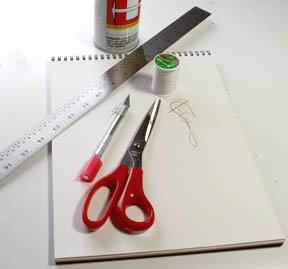 You’ve stuck it through November and have a list of 30 ideas. If you have lists like mine, most of the ideas are stinkers. I’ve been doing PiBoIdMo for more than a few years now, and I do see recurrent themes on my lists. Maybe you also have repetitive ideas on your list. No matter. We’re storytellers. Take those ideas and get visual!
You’ve stuck it through November and have a list of 30 ideas. If you have lists like mine, most of the ideas are stinkers. I’ve been doing PiBoIdMo for more than a few years now, and I do see recurrent themes on my lists. Maybe you also have repetitive ideas on your list. No matter. We’re storytellers. Take those ideas and get visual!
As an artist, I work on picture and text together, creating a dummy. Even if you aren’t a professional illustrator, you can use the framework of the dummy to really make your story shine. And your words sing.
For several years at #kidlitart, with my co-host Bonnie Adamson, we held the Picture Book Dummy Challenge. A lot of the people participating came directly from Tara’s PiBoIdMo. (#Kidlitart chat is on hiatus until Bonnie and I have more time to devote to it again. We’re both busy making lots of dummies!)
A picture book is a partnership of words and images. As word counts drop, the illustrations have to carry more of the story, and things like page turn in the text have to be concise.
This is where a dummy becomes a most excellent tool.
A dummy will tell you if:
- Your story is strong enough to carry through a 32-page book.
Since word counts have been dropping over the last decade to close to 500 and sometimes even less, it is hard to tell if you have a book on your hands (as opposed to a magazine story.) When a manuscript is laid out in a dummy you have visual clues to show you where your story needs more action, drama or dialogue.
- There are enough action scenes for 15-20 images.
An illustrator’s job is to take your manuscript and enhance the story you have written. If you only have a few scenes, this will be downright challenging. Think about your favorite picture books. Does the character move through time and space from the beginning of the book to the end? Or does the character stay in the same place for the length of the story? When a manuscript is laid out in a dummy you have visual clues to show you scene changes. There need to be scene changes.
- The page turns (or the breaks between action) are interesting enough to keep the reader moving to the next page.
In novels there are chapters. Usually the end of the chapter is written in such a way that you want to keep reading. There could be a cliffhanger or some sense of tension in that chapter end. Whatever it is, you feel compelled to get to the next chapter and find out what happens. You care what happens. You can’t wait to find out what happens. When a manuscript is laid in a dummy you get visual clues on your “chapter endings” to show if your page turns will propel the story forward.
- There is too much visual description in your text.
Five hundred words is not a lot to tell a story with a beginning, middle and end; to include a story arc and achieve character growth. The last thing you want to do is talk about red hair and green eyes, or blue sky and orange sunlight. Leave that to the illustrator. Save your words for things that can’t be seen. When a manuscript is laid out in dummy you get visual clues on your descriptions. Are you using precious word count to describe something seen?
All my books start as tiny scribbles. Even if you’re not an artist, you can scribble your ideas down, can’t you?
Here is the thumbnail layout for one of my books, RABBIT’S SONG by S.J. Tucker.
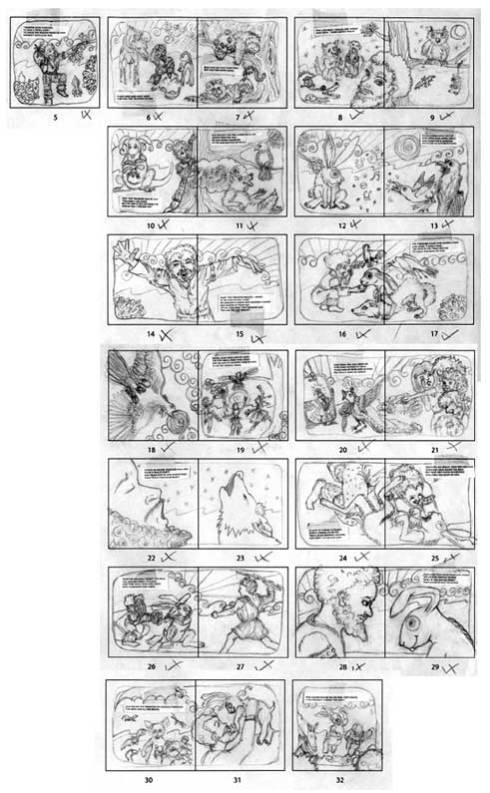
Once you have your scribbles down, you can make a little booklet. It never ceases to amaze me what a difference having a physical dummy makes in visualizing where your manuscript needs some attention.
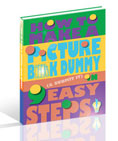 I’ll be giving a way a copy of my e-book “How to Make a Picture Book Dummy in 9 Easy Steps” to one lucky commenter. So let me know how you plan to take your 30 ideas and make them into amazing stories! A winner will be selected in one week. Good luck!
I’ll be giving a way a copy of my e-book “How to Make a Picture Book Dummy in 9 Easy Steps” to one lucky commenter. So let me know how you plan to take your 30 ideas and make them into amazing stories! A winner will be selected in one week. Good luck!
.
A transplanted New Yorker now living in Missouri, Wendy Martin has been working as an illustrator for 25+ years. She earned a degree in Fashion Design from the Fashion Institute of Technology, then continued her art education at the School of Visual Arts with a B.F.A. in Graphic Design. After her move to Missouri in 2000, she turned her focus to her true love, children’s books. AN ORDINARY GIRL, A MAGICAL CHILD, a children’s book she both wrote and illustrated, was released in 2005. The book was picked up by a new house, edited and re-released in 2008, then went on to become a finalist in the 2009 international COVR awards. Four additional picture books and a coloring book quickly followed. Visit her on the web at WendyMartinIllustration.com.






 A transplanted New Yorker now living in Missouri, Wendy Martin has been working as an illustrator for 25+ years.
A transplanted New Yorker now living in Missouri, Wendy Martin has been working as an illustrator for 25+ years.












































 When I was a child, I had a reoccurring nightmare. I was on a field trip with my third grade class in a large grassy area with a huge tree in the middle. All the kids were following the teacher across the field and under the shade of the tree. I wasn’t a very popular child, and I was in the tail end of the line.
When I was a child, I had a reoccurring nightmare. I was on a field trip with my third grade class in a large grassy area with a huge tree in the middle. All the kids were following the teacher across the field and under the shade of the tree. I wasn’t a very popular child, and I was in the tail end of the line. You’ve stuck it through November and have a list of 30 ideas. If you have lists like mine, most of the ideas are stinkers. I’ve been doing PiBoIdMo for more than a few years now, and I do see recurrent themes on my lists. Maybe you also have repetitive ideas on your list. No matter. We’re storytellers. Take those ideas and get visual!
You’ve stuck it through November and have a list of 30 ideas. If you have lists like mine, most of the ideas are stinkers. I’ve been doing PiBoIdMo for more than a few years now, and I do see recurrent themes on my lists. Maybe you also have repetitive ideas on your list. No matter. We’re storytellers. Take those ideas and get visual!

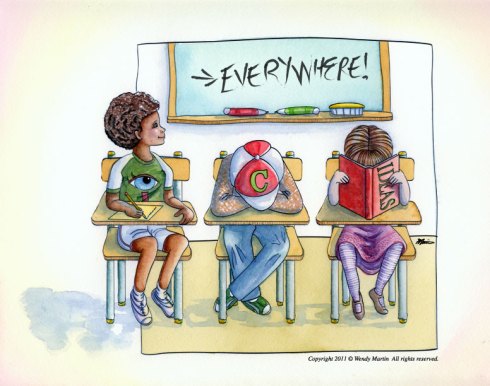
 Wendy Martin is the illustrator of 5 picture books, 3 of which she also wrote. Her first book was chosen as a finalist for the best children’s book of the year during the 2009 Coalition of Visionary Resources annual international COVR awards. Her latest book,
Wendy Martin is the illustrator of 5 picture books, 3 of which she also wrote. Her first book was chosen as a finalist for the best children’s book of the year during the 2009 Coalition of Visionary Resources annual international COVR awards. Her latest book,  Picture Book Month is an international initiative to designate November as
Picture Book Month is an international initiative to designate November as
Wendy does fabulous work! Thanks for sharing!
I so enjoyed this interview with Wendy and gallery of her illustrations! She’s such a pro — and a wizard with digital tools!
I enjoyed your interview very much Wendy. Your artwork is beautiful. Thank you.
I am always amazed by how detailed and jam-packed with lovely art Illustrator Saturdays posts are. I savor them whenever I have the time to read them; there’s always much to learn about artists I’ve not heard of and I enjoy taking a peek into how they work. Thanks for this week’s spotlight on Wendy Martin!
Wendy, a beautiful peek into your art, your work, thank you! Your progression to where you are now & hopes for what you still want to accomplish is inspiring. Kathy, …thank you! Your newsletters & updates speak to my heart.
…are inspiring… ; /
Thank you everyone, especially Kathy for having me visit.
Wendy and Kathy, thank you for sharing wonderful, inspirational art. Wendy I enjoyec watching your mailer card come to life.
Thank you.